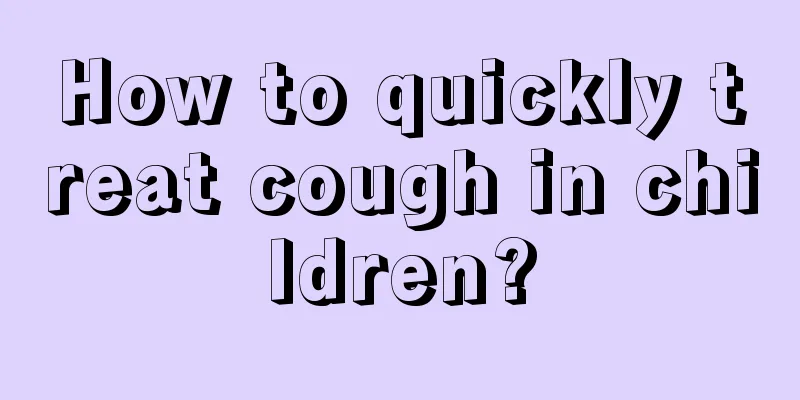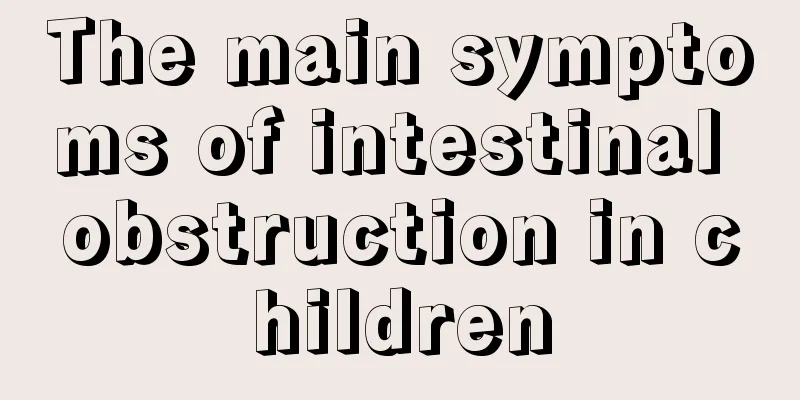How to treat a child with fever and convulsions? These are the methods!

|
Young children are very fragile. Once they have a fever, the high temperature will affect multiple functions of the body. The human body has a self-balancing function. Once a child has a severe fever, he or she will have convulsions. Parents will be very anxious at this time, but they must stay calm and take the following measures to relieve the symptoms. First, adjust your posture When your baby has a seizure, lay him or her flat on his or her back, making sure he or she is not touching any sharp, hard objects. Later, lay your child on his side to allow him to breathe more easily and prevent saliva or vomit from blocking his trachea. Do not try to pry your child's mouth open; a child who is having a seizure due to a fever or other cause is not in danger of biting his tongue. Second, frequent ventilation If there is air conditioning at home, maintain the room temperature between 25 and 27 degrees Celsius. You can place the child in an air-conditioned room or use an electric fan to blow around him to slowly lower the body temperature, so that the child will feel more comfortable. But if the limbs are cold and the patient is shivering violently, it means that the patient needs warmth, so he should be covered with a blanket. Third, take off your clothes If your baby's limbs, hands and feet are warm and he is sweating all over, it means he needs to dissipate heat and he can wear less clothes. Fourth, wipe with warm water Undress your baby and rub his whole body with a warm towel. This will dilate the blood vessels in the baby's skin and release body energy. In addition, when water vapor evaporates from the body surface, it will also absorb body heat. Fifth, drink more water To help sweating and prevent dehydration. Water has the function of regulating temperature, which can lower body temperature and replenish water lost in the baby's body. 6. Antipyretics When the baby's body temperature exceeds 38.5℃, you can use antipyretic medicine appropriately. 7. How to deal with baby’s fever? Fever refers to the abnormal increase in the baby's body temperature. The mother's hands are not thermometers and cannot accurately measure the baby's body temperature. The baby's normal armpit temperature should be 36℃~37℃, and it is only considered a fever if it exceeds 37.4℃. Seasonal climate change is a common cause of children's colds (also called upper respiratory tract infections) 8. Principles for handling baby’s fever Fever is mainly caused by diseases, such as respiratory tract infection, meningitis, urinary tract infection, etc. Therefore, the cause of the fever should be found out in time and the right medicine should be used to reduce the fever. If the body temperature is unstable, it means that the disease has not been cured. Once the disease is cured, the fever will subside. |
<<: Different causes and differences of convulsions in children
>>: What to do if your child has ear knots
Recommend
What should I do if my child has internal heat and cough?
In life, mothers find that their children always ...
How to choose baby pacifier model
Baby pacifiers are actually a product that is oft...
What is vaginal inflammation in young women?
There are many underage women, that is, young gir...
Should babies be bathed every day?
Many parents bathe their newborn babies every day...
Treatment of sinus rhythm in children
Many people only think that some adults will suff...
Three different methods of reducing fever in children
When parents know that their children have a feve...
What kind of exercise can help children grow taller?
If you want a person to grow taller, then exercis...
An eight-year-old girl has a lump in her breast
When a little girl is about ten years old, her bo...
Why does a two-year-old baby breathe faster?
In fact, parents need to pay special attention to...
The child walks with his left foot turned inward
In life, many children have different postures wh...
How long does it take for a child to walk after a broken leg?
The symptom of a broken leg in a child is quite s...
Why is my baby particularly afraid of heat?
Children's physiques are different from adult...
The newborn suddenly has no bowel movement for a day
If a newborn suddenly does not have a bowel movem...
Is emergency room visit contagious for young children?
Young children have relatively weak constitutions...
Tips on how to deal with yellow teeth in children
Children's yellow teeth make many parents par...









